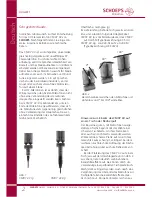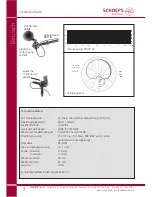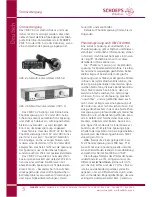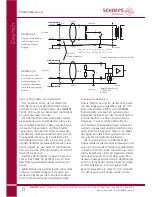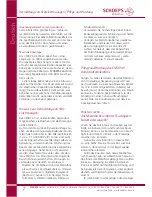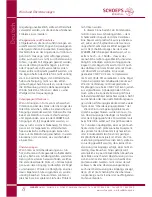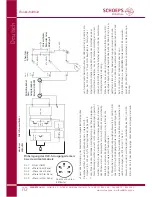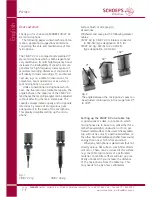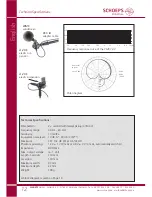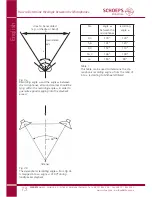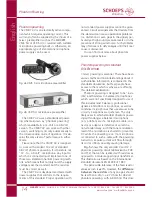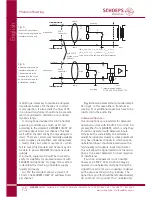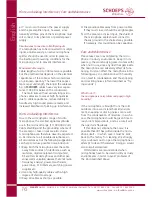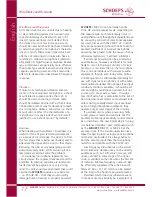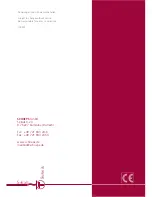
Phantom powering
The CMXY 4V is an electrically active compo-
nent which requires operating current. This
will most often be supplied by the inputs of a
mixer, preamplifier (such as the
SCHOEPS
VMS 5U or VSR 5 U) or recorder with suitable
microphone powering built in. Otherwise, an
appropriate type of stand-alone microphone
power supply can be used.
The CMXY 4V uses a standardized power-
ing scheme known as “phantom powering”
which is available in a 12-Volt or a 48-Volt
version. The CMXY 4V can work with either
version, switching its circuitry automatically to
the corresponding mode of operation. It main-
tains the same level of performance in either
mode.
Please note that the CMXY 4V is designed
to work with standard 12-Volt or standard
48-Volt phantom powering. It is therefore not
”12 - to - 48 Volt” microphone. Any input to
which it is connected must implement one of
those two standard phantom powering meth-
ods, which means that not only must the supply
voltage meet the standard, but the resistors
must be correct as well.
The CMXY 4V is developed and tested with
power supplies that conform to the require -
ments of this standard. Proper operation with
non-standard power supplies cannot be guar-
anteed. Circuit arrangements that deviate from
the standard can cause operational problems
(i.e. distortion or even gaps in the signal), par-
ticularly at high sound pressure levels or in the
presence of strong wind noise. Such problems
may often seem to defy analysis until their real
cause is discovered.
You can find out more about phantom
power supplies below.
Phan tom po we ring to stan dard
DIN EN 61938
Correct powering is essential. There have been
various myths and misunderstandings about it.
Authoritative information is contained in the
standards documents, but few people have
access to them which is why we are offering
this detailed explanation.
Phantom powering is designed to be ”invis-
ible” and harmless to balanced microphones
which were not specifically designed to use it;
this includes most balanced, professional
dynamic and ribbon microphones, as well as
condenser microphones that use vacuum-tube
circuitry. Exceptions are quite rare. The only
likely cases in which standard phantom power-
ing will endanger a balanced microphone
(e.g. a ribbon) are if a microphone cable, con -
nector or adapter is defective or wired in a
non-standard way, such that one modulation
lead of the microphone is shorted to ground at
DC while the powering is on. If a microphone
is connected to such a cable with the powering
turned on, impulse current will flow through
its coil or ribbon, possibly causing damage.
Fig. 5
shows the only valid 48 V and 12 V
phan tom powering circuit (abbreviations: P48
and P12) that can be realized with resistors as
opposed to a center-tapped input transformer.
This illustration is based on the international
standard document EN 61938 of 1997.
The permissible tolerance of the feed resistor
values as such is ±20%. However, the
difference
between the resistors
of any one pair should
be less than 0.4% (i.e. 27 Ohms for 48-Volt
phantom powering with 6.8 kOhm). This close
SCHOEPS
GmbH · Spitalstr. 20 · D-76227 Karlsruhe (Durlach) · Tel: +49 721 943 20-0 · Fax: +49 721 943 2050
www.schoeps.de · mailbox@schoeps.de
Phantom Powering
14
English
Fig. 4a VMS 5 U microphone preamplifier
Fig. 4b VSR 5 U microphone preamplifier


